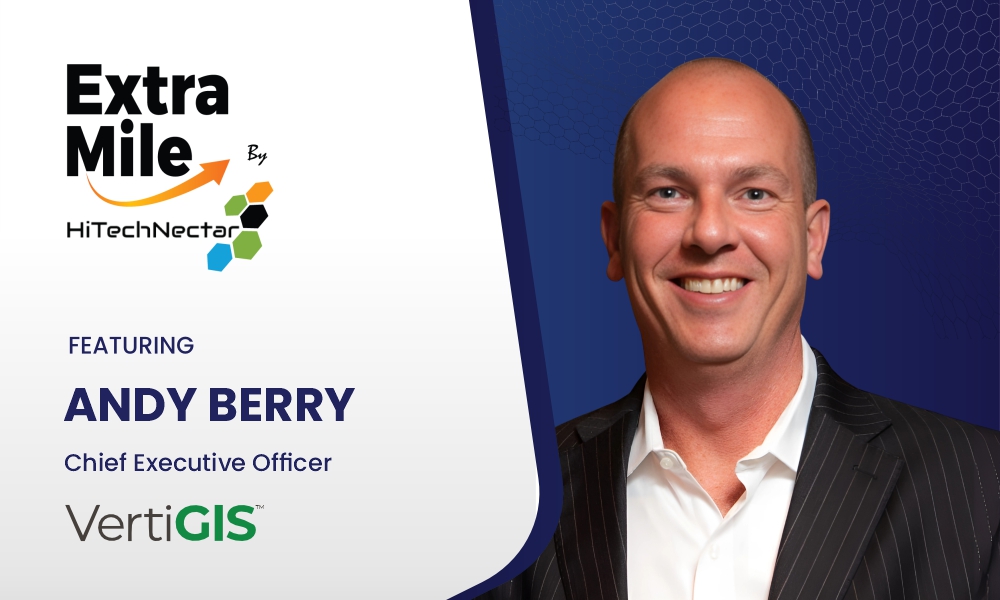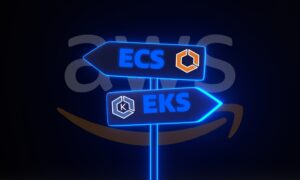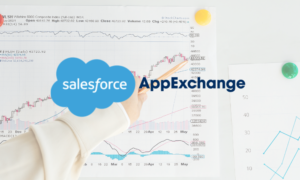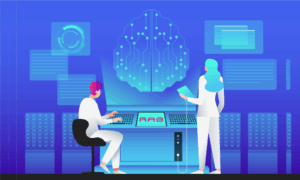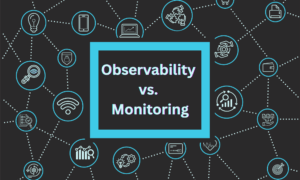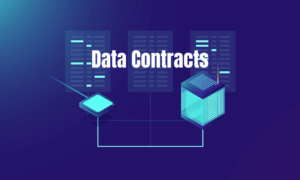Host: Hello everyone, welcome to another insightful episode of ExtraMile by HiTechNectar, where we bring you closer to industry leaders shaping the future of technology. I’m your host, Rittika, and we are here to discuss the latest innovations, tech trends, marketing practices, expert insights, and more.
In this episode, we are excited to have a conversation with Andy Berry, Chief Executive Officer of VertiGIS, a firm assisting organizations worldwide harnessing the power of geographic information systems to solve real-world challenges.
From utilities to local government, VertiGIS builds customizable software that turns special data into actionable insights, making operations smarter and more efficient. With over a decade of leadership experience at companies like Pitney Bowes and Infor, Andy has a proven track record of scaling tech businesses globally.
Today, we will explore VertiGIS’s journey, their unique approach to geospatial tech, and how they adapt to trends like AI and IoT.
Andy, it’s a pleasure to have you here. Hope you’re doing well today.
Andy: Great, thank you.
Host: Yeah. So, as we know, VertiGIS helps organizations around the world to use geographic information systems effectively. How does the company achieve this goal and how does it stand out in the busy geospatial tech industry?
Andy: Yeah, what we find historically in the GIS space is technology. And that technology was then handed to customers to solve their day-to-day business challenges. And the evolution over the last several years is that customers, many of which are solving the same problems, wanted enterprise-grade applications out of the box in the cloud to help them accelerate innovation in their businesses.
So, where we stand out is we are now a global player in this space through both acquisition and organic growth on the enterprise side of the GIS field. So, GIS as a technology is fundamental to what we do, but what our customers want is value. They want us to solve their problems in a repeatable way that scales globally and brings the power of GIS into the hands of business users to solve their day-to-day problems.
Host: That’s fascinating. It’s clear that VertiGIS is not just about math. It is about solving real problems with spatial intelligence. So, moving ahead, you have led teams at Pitney Bowes, Infor, and now at VertiGIS. So, what is your leadership philosophy for scaling tech companies across the globe?
Andy: It’s finding great talent that likes to talk to customers, that truly understands the challenges they’re trying to solve, and then accelerates the value that we can deliver to them. So, it’s finding that right mix of people who understand technology but understand the applicable aspects of technology to solve problems for our customers. So, there’s lots of technologists around, but finding that mix of someone who understands how to solve problems, quite complex problems with the technology at hand, is really something I look for in people.
Host: So, yeah, adaptability and finding the right technology is the key, I guess.
Andy: Yeah, and geography has no limits. So, we find great people around the world to solve our customers’ challenges. Our customers happen to be global as well.
So, it’s not a specific geography, it’s not even a specific background. It really is that blend of technology and business orientation, and how to properly apply technology. So, it’s not just another technology solution, but it actually fundamentally looks at what are the use cases, what are the workflows our customers are trying to solve, and then how can we accelerate the solution in those areas?
Host: Yeah, absolutely. So, next up, VertiGIS is known for its configurability. So, can you share an example of how a customer creatively customized your platform to solve a problem you didn’t expect?
Andy: Yeah, it comes down to workflow. So, the solution itself is configurable in that it can map out different workflows, which really enlightens our customers on different challenges they can solve. Recent example in Canada, customers are applying workflow and AI-based technologies to optimize how police forces are deployed.
So, they can look at historical crime data, they can look at future projected crime, and allow police forces to be more nimble and agile in rotating police to the right place. Not one of our core industries, and something we hadn’t thought about. So, really a customer-driven innovation outside of what we expected.
Host: That’s a creative solution, I guess.
Andy: Yeah, very creative and driven by the government, driven by the police forces. Very simple problem, but no one had come up with an innovative solution. So, it was great to see our customers drive that with us.
Host: Yeah. So, approaching ahead, your solutions are used in the utilities, telecom, and government sectors. So, can you share a real-world example where VertiGIS technology directly improved operations or decision-making for a client?
Andy: Yeah, so utilities are pretty basic in what they do. So, provide clean water, provide reliable energy, but the complexity behind that is complex. So, what we’re finding is that here in the UK, we pump sewage straight into our drinking water.
It’s a fundamental issue, and we can’t believe something so fundamental is allowed to happen. And clean water is one of those gifts that we all rely upon. So, what we’re seeing now is customers pushing the power of leaks in the sewer system, leaks in the water system out into the hands of users, or even the citizens to report real-time issues that we can proactively or reactively solve in the field.
So, fundamentally a simple problem. Technology is an easy way to push the solution out into the hands of people that are impacted.
Host: Yeah, impressive and transformative. Moving ahead, VertiGIS recently acquired Topo Graphics and IBR GeoInformation. So, how do these acquisitions fit into your growth strategy?
Andy: Yeah, so in the DOC region, so Germany, Switzerland, Austria, we provide land management-based solutions. And these acquisitions fit right into the industry that we serve. And what it allowed for is the ability for our customers not to rely on one GIS foundational system.
And it freed them up to use the best-in-breed technology that’s available, be that Esri, be that open source, be that other technologies, to fundamentally shift their view from a tech solution to a business solution. So, in our deploying our web-based solution to allow the better handling of geography, in this case land management, and for it to be transparent to the end users, so architects and end users can then log on to the solution and understand, are they allowed to build? What are they allowed to build? What are the criteria around that in a very transparent and rapid fashion?
Host: That’s innovative. Next up, your partnership with Esri is a key differentiator. How does this collaboration enhance what VertiGIS offers to customers?
Andy: So, Esri, at the foundation of everything we do, or many of the aspects of what we do, is the best-in-breed from a GIS perspective. They’re a global organization. They provide wonderful technology.
And then we’ve built on top of that a low-code, no-code foundational layer to allow the creation of enterprise-grade applications, upon which we build our solutions for utility, for fiber, for local government. So, that foundation is critical for us in that it’s global in scale, as are we. Their technology is innovative.
It’s a large organization out of California, but also with distribution presence around the world. So, we find them valuable, not only for the great technology they provide, but also for the reach into end-user customers around the world that we try to serve.
Host: Yeah, the partnership with Esri is going to be innovative. So, moving further, what is the hardest part about convincing organizations to invest in spatial intelligence, and how do you address it?
Andy: Yeah, the hardest part for our team, and really for the industry, is being able to articulate what it brings organizations, not from a technology, but from a business use perspective. GIS has been around for a long time, as has Esri, and that technology is then used by their customers and our customers to create solutions. And what we’re seeing now is a shift to bringing geography to business users.
So, how do you take what was a power user base of GIS technology, part of IT, but really hidden in most organizations, and exposing that great technology to help solve problems quicker and easier? So, it’s really that shift of how do you drive what is a great siloed technology into the enterprise grade, side by side with ERP and asset management in many of our customers.
Host: Yeah, breaking down complex tech into high relatable benefits, that’s where the magic happens, I guess.
Andy: It is, and that’s what our customers are driving us for. So, they want quicker innovation around measurable business value, and not technology for technology’s sake. And that really is what distinguishes VertiGIS from underlying GIS technology.
So, our customers are at scale with thousands of users and tens of thousands of users, doing the basics that a utility does, that a fiber company does. They want to focus on how do I drive fiber adoption quicker, how do I track what’s in the ground, how do I react quicker to events that happen, be that a fiber line cut or a water main cut, such that customer experience is improved.
Host: Yeah, okay. Lastly, but most importantly, technologies like AI and IoT are transforming spatial data with advanced opportunities. Similarly, where do you see the most exciting opportunities for GIS in the upcoming years?
Andy: So, AI has really come alive, I would say, even in the last three months. So, a laggard to other AI deployments around the world. And what we’re seeing it as a productivity improver.
So, being able to ask the computer to do things, being able to understand where your assets are, using AI to identify those assets in real time, just drives huge productivity on day-to-day mundane work. So, our customers can focus on the high-value work that they really want to focus on day in and day out.
Host: Yeah.
Andy: I would say the second one outside of AI is really just web and mobile-based technologies. And what is our industries that tend to be laggards in technology. So, many of our customers are still deployed on the desktop.
It’s a power user base rather than bringing the power of all that GIS and business applications to the fingertips of users. So, we’re seeing a big shift in the market from a power user base to a business user base that they can take that technology and improve what they do day in and day out.
Host: Yeah. So, yeah, of course, AI has some transformational potential to impact diverse industries, including GIS.
Andy: So, especially in a highly regulated environment. So, this is where AI really starts to show its power in that these regulations are documented, they’re available. So, you can use AI and AI-based models to understand that documentation in real time to really improve the business outcome of what our users do.
Host: And what’s your opinion on IoT?
Andy: It’s a driver in that it allows us to track in real time through sensors, through smart city developments of what’s really happening without human intervention. So, we can understand water flows. We can understand leaks.
We can understand issues in new green energy forms of electricity coming onto the grid. What’s the impact to the grid, to your network? And then how do I adjust that to the best service, the end customer?
Host: Absolutely valuable. Thank you, Andy, for sharing your expertise and vision. It’s clear that VertiGIS is not just mapping the world. It is helping organizations navigate it more effectively. Thank you so much for joining us.
Andy: Great, thank you.
Host: Thank you, everyone, for joining us today. I’m your host, Rittika, signing off. See you in the next episode of ExtraMile by HiTechNectar with our next extraordinary guest on board, sharing their knowledge and thoughts.
Until then, stay tuned.
Explore Our Other Insightful Interviews:
